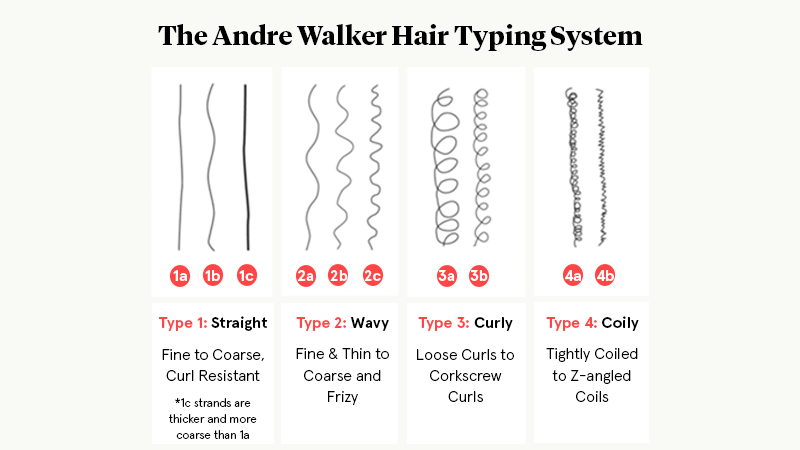8 Research-Backed Remedies for Stronger, Healthier Hair

Yes, male pattern baldness is incurable. But that doesn’t mean you have to give up and just let it all fall out. Instead, you can take action and stop your hair loss with finasteride and minoxidil. Then you can supplement this hair loss treatment by improving the quality of the hair you do have.
We’ve put together eight research-backed hair care remedies that can help make your hair look stronger, fuller, and healthier. While the tips below won’t prevent further hair loss, they can help prevent your hair from breaking, limit split ends, and increase the glossiness of your locks, all of which lead to a fuller-looking, healthier hair.
Combine these tips with treatment and you might just be on the way to having a better head of hair.
1. Shampoo regularly
This is probably a given, but when your hair is thinning or feels weak and damaged, it’s really important to wash it regularly. That’s because shampoo protects the hair shaft (the portion of hair between the root and the end) from further damage.
But before you go washing your hair three times a day and expecting a full head of beautiful hair to appear, hold up. In order to reap the benefits of shampoo, you should use it between two to three times a week. Any more than that, and you risk stripping your scalp and hair of those natural oils—and as you’ll learn in just a little bit: Those oils are necessary for healthy hair.
Oh, and if you’re dealing with dandruff, consider trying ketoconazole shampoo, a shampoo that addresses the issue head-on. (Sorry, sometimes the puns just pop out.)
2. Pay attention to the ingredients in your shampoo
Shampooing your hair regularly won’t do you any good if you’re using one that’s harmful to your hair. And while that’s good to know, there are a lot of types of shampoo out there. So many that you may encounter decision paralysis when you go to buy one. Hopefully that’ll make it a little bit easier. When you’re picking out your next bottle, avoid the following ingredients:
- coal tar dyes
- DMDM hydantoin
- Imidazolidinyl
- parabens
- phthalates
- sodium lauryl sulfate (also known as sodium laureth sulfate)
- triethanolamine
Instead, look for plant-based, organic, and raw shampoo ingredients like biotin, caffeine, green tea, and saw palmetto.
3. Reevaluate how you wash your hair
The way you treat your hair every day is incredibly important, as there are certain hair grooming habits that can help protect your hair from everyday wear-and-tear.
Here are some of the main ones: When you shampoo, make sure you focus your scrubbing on your scalp, not on your hair. After you’ve rinsed the shampoo out fully, dry it gently with a towel. Then, apply conditioner.
Unlike with the shampoo, though, you want to put the conditioner directly on the hair strands, avoiding the scalp. If you have curly or kinky hair, you can use leave-in conditioner, in which case you wouldn’t wash it out. (Never heard of leave-in conditioner? You need our guide to the seven types of conditioner.)

But for other types of hair, you want to use the conditioner in the shower so you can fully wash it out a few minutes after. For non-curly hair, leave-in conditioner can make it dull and oily. Just make sure you don’t skip this step—conditioner helps reduce inter-fiber friction, make your hair shiny, detangle your strands, and eliminate frizz.
4. Stay out of the sun
We know — when it’s a sunny day out, you want to get outside and take advantage of it. Those rays probably feel great on your skin. But the fact of the matter is, too much in the sun is just not great for your hair. At all. The sun’s UVA and UVB rays can really damage the hair, making strands brittle, dry, and much more susceptible to breakage and split ends.
And listen—we’re definitely not saying you can’t go outside. Everyone needs that fresh air and vitamin D. But we are saying to be mindful of how much exposure to the sun your hair gets.
So when you’re outside—whether commuting to work, walking the dog, attending a sports game, or hanging out with friends—consider hanging out in the shade and wearing a hat to help shield your hair. (And no, contrary to popular belief, wearing hats does not cause hair loss.)
5. Avoid hair dye
The verdict is in: If you want the strongest, healthiest hair possible, you should probably avoid changing its color with dye or bleach. Because color-treated hair ultimately has chemical damage. And chemical damage to the hair can weaken it, which means it’s going to break much more easily.
6. Use heat protectant
Similar to chemicals, heat can also be incredibly damaging to your hair, whether that’s heat from the sun, a blow dryer, or a styling tool. After you wash your hair, you should let it air dry. But, if you don’t have the time (or if you just hate the way it looks when it air dries), try using a product, such as a spray or cream, that can protect your strands from the full effects of the heat. The same goes if you’re styling your hair with a tool, such as a straightening iron.
Most of the heat protectants you’ll find will have silicone in them. Silicone is heat-resistant and will help spread the heat along the entire length of the strand rather than having it focused right on the spot the heat is at. Before exposing your hair to heat, apply the heat protectant all over.
7. Give your head a massage
When you get a massage, the body tissue gets warmer, and that makes blood vessels open up more. This, in turn, increases blood flow to the part of the body being massaged. When you increase blood circulation to your scalp, the hair follicles also receive more blood. More blood means that the hair root, which is inside the hair follicle, receives and absorbs more nutrients — such as the fats and proteins that make up your hair. And the massage doesn’t have to be professional. You can simply knead every inch of your scalp yourself while you’re in the shower following all the tips above.
8. Coat your hair with oil
Your hair has fat in it, and oils are pretty much pure fat. So putting them on your hair can help restore those naturally-occurring fats. Oil can also help decrease the inter-fiber friction that can occur with combing the hair, which is always a plus, because friction between hair strands can cause breakage. Here’s the catch: You can’t use just any oil. Oils high in saturated and monounsaturated fats are good because these types of fatty acids penetrate the hair strand more easily. Oils with polyunsaturated fats, on the other hand, don’t have the same effect.
One great option is coconut oil. In fact, one study showed that coconut oil assisted with decreasing how much protein the hair lost, which basically means it prevented the hair from getting weaker. Another oil that’s high in saturated fat is palm oil (such as saw palmetto oil), and some options high in monounsaturated fats are almond oil, olive oil, and argan oil.
Another oil that’s gotten tons of hype online lately is castor oil, which is rich in a monounsaturated fatty acid called ricinoleic acid. Despite its reputation as an instant hair growth serum, there’s very little scientific evidence that castor oil has that benefit. But it can still condition your hair and make it look shinier, and its antimicrobial properties might help relieve dandruff.
Keep in mind that castor oil is very thick and can cause buildup and even matting, so if you want to use it, be careful. Use only a dime-sized amount, dilute it with one of the oils mentioned above, and wash it out no more than a few hours later. Only use black castor oil if you have thick, dry hair—the standard cold-pressed version is better for fine hair.
Two other commonly suggested home remedies for hair loss are egg hair masks and onion juice. Both contain similar structural components to hair. Eggs have a lot of fats and proteins, and onions are full of sulfur and antioxidants. Sulfur bonds make up keratin, the main protein in hair, and antioxidants protect hair from free radicals it’s exposed to from things like UV rays and pollution. The idea with both of these is that soaking your hair in liquids- rich in the same components hair has can help strengthen it.
But there’s just one thing: There isn’t much research to back these two methods up, though. One study done on 38 people (a small sample size), showed that onion juice can help with hair regrowth, but that was for alopecia areata, a different type of hair loss than male pattern baldness. Giving these a try seems relatively harmless (unless you have a food allergy), but because both lack research, it’s at your own risk.
Ultimately, none of these home remedies prevents male pattern baldness—they won’t stop you from losing your hair and going bald. But they can help you with the quality of the hair you do have (and minimize the appearance of thinning hair), and that’s never a bad thing, is it?
The information provided in this article is not a substitute for professional medical advice, diagnosis, or treatment. You should not rely upon the content provided in this article for specific medical advice. If you have any questions or concerns, please talk to your doctor.
If you’re experiencing a mental health crisis, please call 911 or go to your nearest emergency department. If you are contemplating suicide, call 911 or call/text the National Suicide and Crisis Lifeline at 988. These services are available 24/7.
If you would like to learn more about finasteride, please see the full prescription information here. You are encouraged to report negative side effects of prescription drugs to the FDA. Visit MedWatch: https://www.fda.gov/Safety/MedWatch/default.htm or call 1-800-FDA-1088
Ketoconazole is an antifungal medicine used to treat certain kinds of fungal or yeast infections. When used as prescribed, ketoconazole is generally safe, but it also can cause side effects. Contact your doctor immediately if you experience allergic reactions like skin rash, itching or hives, swelling of the face, lips, or tongue, pain, tingling or numbness. For full prescribing information, view the drug label information.
Photo by Eduardo Dutra on Unsplash